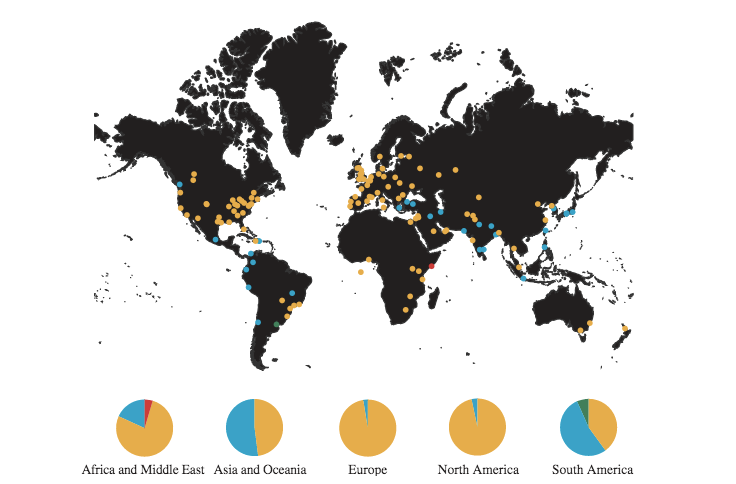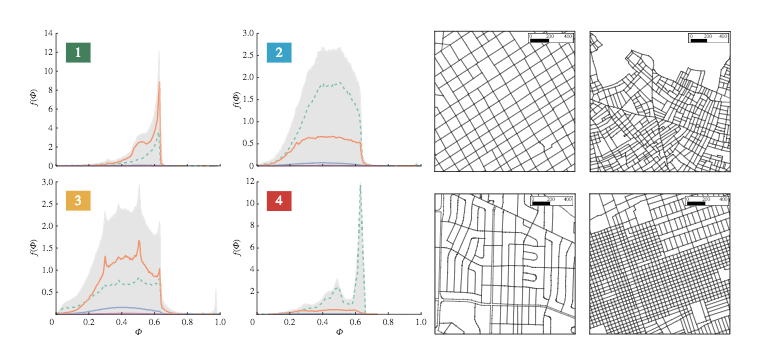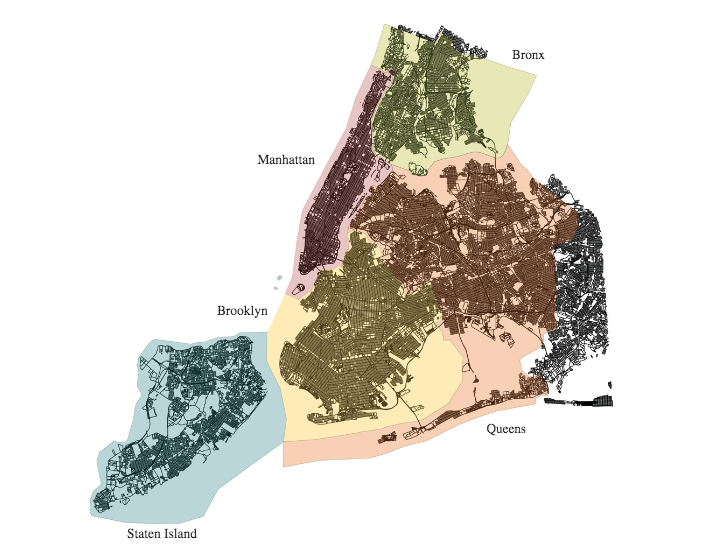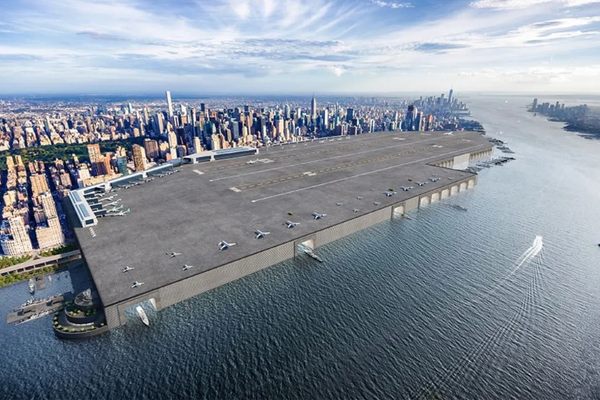How Brooklyn Is Like Buenos Aires: Toward a Science of Cities

Location of the 131 cities in the study’s dataset and geographical repartition of the different groups (via Royal Society Publishing)
Marc Barthelemy and Rémi Louf, researchers at L’Institut de Physique Théorique outside of Paris, are seeking quantitative approaches to understanding cities. They use philosophy and physics to determine things like the ways traffic burdens cause cities to fragment, or whether large or small cities are smoggier. In their latest paper, “A typology of street patterns,” published in the Journal of the Royal Society Interface, they argue that cities can be classified by the size and layout of their blocks, concluding that there are only four different types of cities in the world.
“You can think of this classification being for cities what Zoology is for animals or Botany for plants: a way to sort some objects according to their similarity,” Barthelemy said in an email. Categorizing a city based on its blocks uses both topology and geometry, and yields a given city’s “fingerprint” or street pattern. As explained by The Week, the cities representing each of the four fingerprints are New Orleans (large blocks in a variety of shapes), Athens (smaller blocks in a variety of shapes), Buenos Aires (medium-size blocks that are mainly square and rectangular) and Mogadishu (almost exclusively small square blocks).
 The four groups of cities with typical street patterns for each group (via Royal Society Publishing)
The four groups of cities with typical street patterns for each group (via Royal Society Publishing)
The researchers also analyzed the five boroughs of New York City and came to some surprising conclusions. Staten Island and the Bronx have similar fingerprints, but the other boroughs have more in common with other cities. Brooklyn and Queens, both of which have regular block patterns, fall into the group represented by Buenos Aires, whereas Manhattan, which is mostly made up of elongated rectangles and squares, has the most in common with New Orleans. “Manhattan is very distinct from all the other boroughs,” Barthelemy explained on Motherboard. “These other boroughs are very similar to each other — and similar to Detroit — but with different feels or touches: Brussels for Brooklyn, Miami for Queens, Porto for the Bronx, and As-Suwayda for Staten Island.”
 NYC and its different boroughs’ fingerprints (via Royal Society Publishing)
NYC and its different boroughs’ fingerprints (via Royal Society Publishing)
Of course, as they acknowledge, “Cities are complex objects, and it is unlikely that a representation as simple as the fingerprint can capture all their intricacies.” But this research can help us understand the many differing factors in the ways cities grow — in response to geography vs. planned patterns, for example — and whether these methods can be improved. “Despite the simplifications that our method entails, we believe that the classification we propose is an encouraging step towards a quantitative and systematic comparison of the street patterns of different cities. This, together with the specific knowledge of architects, urbanists, etc. should lead to a better understanding of the shape of our cities.”










Follow us on Twitter to get the latest on the world's hidden wonders.
Like us on Facebook to get the latest on the world's hidden wonders.
Follow us on Twitter Like us on Facebook